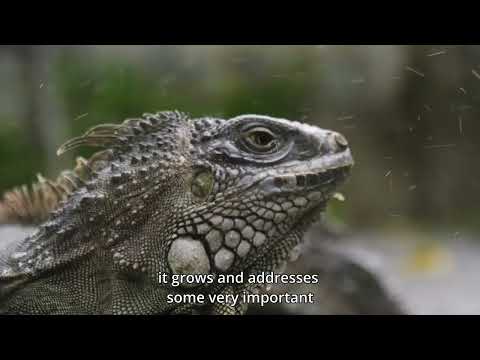Main Issue
Biodiversity is the variety of Earth’s terrestrial, freshwater, and marine organisms, as well as the ecosystems of which they are part. Biodiversity is crucial to the future of all life on the planet and is also the foundation for the ecosystem goods and services that enable human societies to thrive. Biodiversity provides us with food, water, and materials, as well as services such as climate regulation, pollination, disaster protection, and nutrient cycling.
Biodiversity, thus, is fundamental to sustainable development. Managing and protecting this asset for current and future generations requires full engagement of governments at all levels, civil society organizations, the private sector, Indigenous Peoples and local communities, and others.
The Convention on Biological Diversity (CBD), which came into force in 1993, is the global policy framework for action to maintain biodiversity for future generations. There has been some progress in conserving and sustainably using biodiversity and ecosystems at local and national levels over the past several decades but not at the scale necessary to stem the ongoing tide of biodiversity loss. Changing the trajectory of biodiversity loss means addressing its five main direct drivers: habitat change; overexploitation or unsustainable use; climate change; pollution, and invasive alien species. These critical drivers of biodiversity loss are intensifying, particularly habitat loss driven by the expansion of agriculture.
Featured Stories
New biodiversity fund approves project preparation grants
What We Do
The GEF provides financial resources for developing countries and countries with economies in transition to implement the CBD.
The goal of the GEF-8 (2022-2026) biodiversity focal area strategy is globally significant biodiversity conserved, sustainably used, and restored.
To achieve this goal, GEF-8 investments will focus on three main objectives:
- Improve conservation, sustainable use, and restoration of natural ecosystems.
- Effectively implement the Cartagena and Nagoya protocols.
- Increase mobilization of domestic resources for biodiversity.
Results
The GEF has invested more than $5.2 billion to conserve biodiversity and use it sustainably. This investment has leveraged over $13.4 billion in additional funds, supporting 1,500 projects in more than 158 countries.
The GEF has supported the improved management of more than 2,500 million hectares of terrestrial and marine protected areas around the world, an area larger than the size of Latin America. We have also helped countries sustainably use and manage biodiversity across more than 543 million hectares of productive landscapes and seascapes.
Under the Cartagena Protocol, the GEF has supported the development of National Biosafety Frameworks in 127 countries and their implementation. GEF support has also been critical in bringing the Nagoya Protocol into force by supporting countries to develop the needed legal and policy frameworks to be able to ratify the agreement. A growing part of the GEF portfolio is building country capacity for its implementation.
Looking Ahead
The GEF-8 biodiversity strategy reflects the priorities of the post-2020 global biodiversity framework and responds to several major global studies on the biodiversity crisis, including the Dasgupta Review, the Fifth Global Biodiversity Outlook, and the 2019 Global Assessment Report from the Intergovernmental Science-Policy Platform on Biodiversity and Ecosystem Services (IPBES).
The strategy provides a comprehensive response to the drivers of biodiversity loss. This is complemented by a set of integrated programs that reflect the evolution of the GEF’s biodiversity portfolio toward integrated landscape/seascape management and biodiversity mainstreaming across sectors and value chains.
Objective one of the strategy marks a shift in the GEF strategy from previous phases. GEF-8 focuses on integrated landscape/seascape management approaches that use multiple tools and strategies to respond to the drivers of biodiversity loss within large landscape and seascape mosaics. This strategic shift reflects the evolution of the GEF portfolio as countries are already blending protected areas, other effective area-based conservation measures, sustainable use, and biodiversity mainstreaming approaches in the context of large-scale investments in landscape and seascape mosaics. This more integrated and complementary approach is likely to achieve more durable results in conservation, sustainable use, and restoration.
Objective two of the strategy continues GEF support to capacity-building for implementation of the Cartagena Protocol and Nagoya Protocol.
In response to growing interest in domestic resource mobilization within the CBD processes, objective three of the strategy aims to help countries mobilize domestic resources through the development and implementation of biodiversity finance plans.
The GEF will also support the development of biodiversity policy and institutional frameworks through enabling activities. Enabling activity support includes revisions to the national biodiversity strategy and action plans, and national reports for CBD, the Cartagena Protocol, and the Nagoya Protocol.












